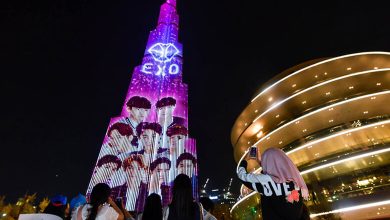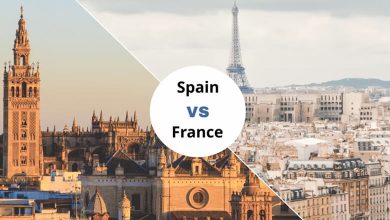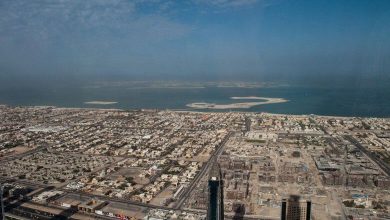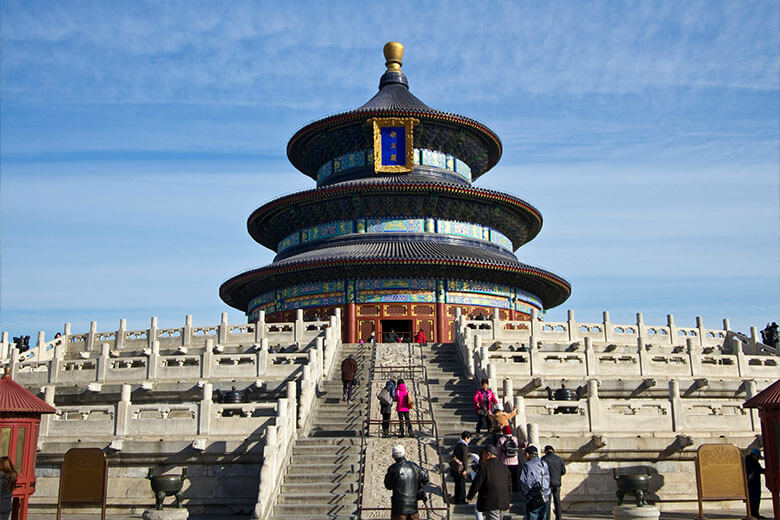
In the southeast of central Beijing, the complex of imperial religious buildings known as the Temple of Heaven can be found. For their annual prayers to Heaven for a good harvest, the Emperors of the Ming and Qing dynasties visited the complex.
The Temple of Heaven was imprinted as a World Heritage station in 1998 and was named “a gem of design and countryside design that utterly and depicts a cosmogony of excellent significance for the progress of individuals of the globe’s excellent civilizations…” as the “representative chart and design of the Temple of Heaven had a deep influence on design and preparation in the Far East over many days.”
History of the Temple of Heaven
The mosque complex was built from 1406 to 1420 all during the reign of the Yongle Emperor of the Ming Dynasty, the one that was still the reason for the explanation of the Forbidden City in Beijing. It is now situated in Dongcheng Beijing, China. The complex was comprehended and renamed the Temple of Heaven all along the area of the Jiajing Emperor in the 16th of one hundred years.

JiaJing again erected three added important synagogues in Beijing, the Temple of Heaven the Sun in the Orient, and the Temple of Earth in the Northward, The Temple of Heaven was refurbished in the 18th century under the Qianlong Rulerand, to the west, the Temple of the Moon. By then, the United States of America budget was lacking, so this was the last big remodelling of the place of worship complex on regal occasions.
The pagoda was busy with one Anglo-French agreement all the while the Second Opium War. In 1900, all the while the Boxer Rebellion, the Eight-Nation Alliance busy the church complex and curve it into extrasensory perception’s makeshift command in Peking, that endure for an individual period. With the ruin of the Qing, the chapel complex was abandoned and un-trained. The neglect of the church complex surpassed the collapse of various halls in the following age.
In 1914, Yuan Shikai, therefore President of the Republic of China, acted a Ming pleading ritual at the pagoda, as a constituent of work to have himself asserted Emperor of China. In 1918 the pagoda was curving into a park and for the first period available to all.
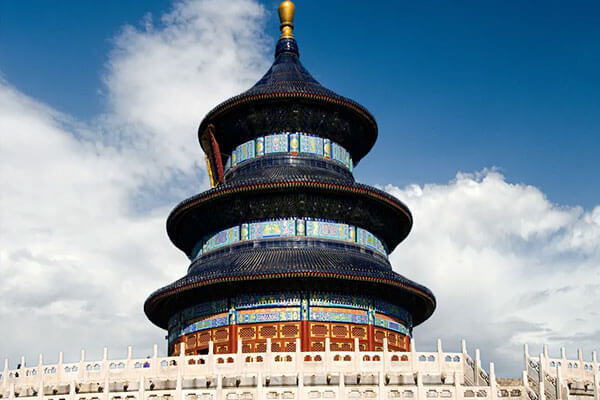
Layout and Buildings of the Temple of Heaven
The Temple bases cover 2.73 km2 of land that is reserved for pleasure and constitute three main groups of constructions, all buxom following authoritarian reflective necessities:
The Hall of Prayer for all time Harvests is a glorious threefold-gabled circular construction, 36 m in width and 38 m unreasonable, erected on three levels of or like marble gravel base, place the emperor prayed for all time harvests. The construction is entirely stiff, accompanying no nails. The original construction was scorched unhappy by a fire created by fulmination in 1889. The current construction was restored various ages later the occurrence.
The Magnificent Vault of Paradise is a solitary gabled round building, based on a solitary degree of marble stone base. Although it is smaller, it is situated south of the lobby of Prayer for Best Harvests. The Echo Wall, a smooth circular wall that can transmit sound over great distances, surrounds it. The Vermilion Steps Bridge, a 360-meter-long raised walkway that gradually ascends from the Imperial Vault to the Hall of Prayer, connects the Imperial Vault and the Hall of Prayer. Additionally, there are no crossbeams supporting this building’s dome.
The actual altar can be found south of the Imperial Vault of Heaven in the area known as the Circular Mound Altar. There are three levels of marble stones, each adorned with elaborately carved dragons, and it is a circular platform that is empty. The sacred number nine or its nonuples are the numbers of various Altar components, including its balusters and steps.
The focal point of the special stepped area is a round record called the Core of Paradise or the Incomparable Yang, where the Head petitioned God for a great climate. On account of the plan of the special stepped area, the request will be reflected by the guardrail, making critical reverberation, which should assist the request with speaking with Paradise. The Jiajing Emperor constructed the altar in 1530 and rebuilt it in 1740.

Ceremony of the Temple of Heaven
In old China, the Ruler of China was viewed as the Child of Paradise, who regulated natural matters for and addressed grand power. It was very important to appear to respect the source of his authority by offering sacrifices to heaven. The sanctuary was worked for these functions, for the most part involving petitions to heaven for good collects.
The emperor and all of his entourage would travel through Beijing twice a year in special robes and without eating meat to camp inside the complex. This procession and the ceremony that followed were not accessible to ordinary Chinese. In the sanctuary complex, the Sovereign would by and by go to Paradise for good gathers. The high point of the function at the colder time of year solstice was performed by the Sovereign on the Natural Mount. The ceremony had to be carried out perfectly; it was broadly held that the littlest of missteps would comprise a terrible sign for the entire country in the approaching year.
Symbolism in the Temple of Heaven
Heaven was symbolized by a circle and Earth by a square; The connection of Heaven and Earth, of circle and square, is exemplified by a number of the features of the temple complex. The entire sanctuary complex is encircled by two cordons of walls; The northern end of the outer wall is taller and semicircular, whereas the southern end is shorter and rectangular, representing Earth. Both the Corridor of Petitioning God for Good Collects and the Round Hill Raised area are round, each remaining on a square yard, again addressing Paradise and Earth.

The Circular Mound Altar’s design shows that the number nine represents the emperor: A single round marmor plate is surrounded by a nine-plate ring, followed by an 18-plate ring, for a total of nine surrounding rings, the outermost of which contains ninety-nine plates.
The Lobby of Petitioning God for Good Collects has four internal, twelve center and twelve external support points, addressing the four seasons, a year and twelve conventional Chinese hours separately. The traditional solar terms are represented by the twelve middle and twelve outer pillars taken as a whole. Heaven is represented by distinctive dark blue roof tiles on each Temple building.
The Seven-Star Stone Group is located east of the Hall of Prayer for Good Harvest and symbolizes the seven Taishan Mountain peaks, a location of paradise worship in traditional Chinese culture.
Each season is represented by one of the four main dragon pillars that provide support. The construction, held up by these mythical serpents, impersonates the style of an old Chinese regal royal residence. Twelve internal points of support represent the lunar months, and it is believed that the twelve external points of support allude to the 12 two-hour times of the day.
Park in the Temple of Heaven
With a total area of 267 hectares (660 acres) comprised of the complex, the park that surrounds it is quite extensive. Playgrounds, exercise, and game areas make up some of them. Adults as well as parents and grandparents bringing their children to play make extensive use of these facilities. Choral performances, ethnic dances, and other presentations frequently take place in some of the open spaces and side buildings, particularly in the morning.
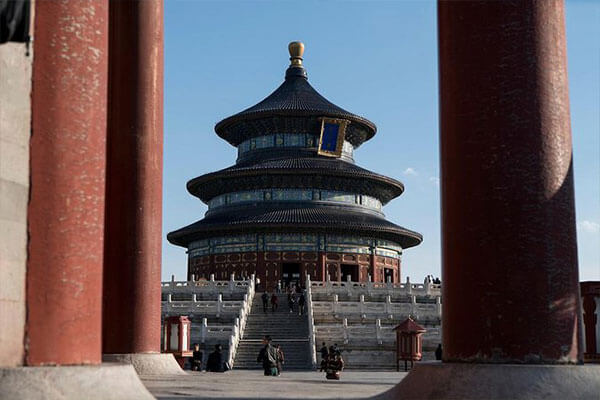
Access to the temple of heaven
The south Dongcheng District is home to the Temple of Heaven, which just before 2010 was a few Chongwen District. The park itself is open day-to-day from 6:00 am–10:00 pm. The artefact sites were inside the park opening hours are from 8:00 a.m. to 17:30 p.m. from April 1 to October 31 and from November 1 to March 3. There is a supposed effort charge that changes following whether it is peak season or off-season. Tickets stop auction individual moment and a half before the door closing
Public transportation makes it possible to reach each of the park’s four gates.
East Gate on Tiyuguan Road and Tiantan East Road: Tiantandongmen Station on Line 5 of the Beijing Subway; The following are Beijing bus routes: 25, 36, 39, 208, 525, 610, 685, 686, 723, 827, 829, and 958
West Gate on Nanwei Road & Tianqiao South Street: Station Tian Qiao on the Beijing Subway Line 8; On Tiantan Road and Qinian Street, Beijing Bus routes 2, 15, 17, 20, 35, 36, 69, 71, 120, 203, 504, 707, 729, and 11 as well as BRT1
North Gate: On Yongdingmen East Street and Jintai Road, Beijing Bus routes 6, 34, 35, 36, 106, 110, 687, and 707 South Gate are available: Beijing Transport highways 36, 53, 120, 122, 208, 525, 610, 958, 3, 11, 12, 102
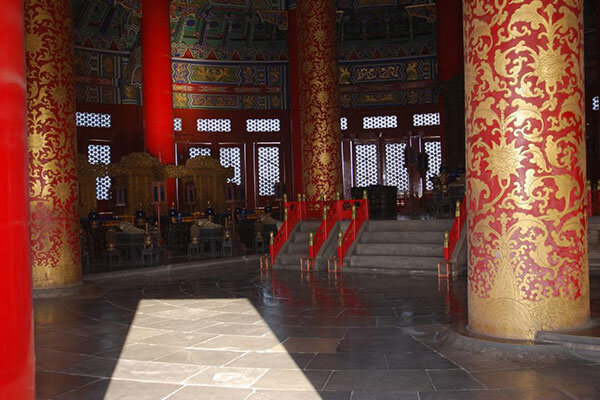
Seven Interesting Facts About Heaven’s Temple
The Hall of Prayer for Good Harvests’ optical illusion
The stories behind the pillars
Eight stones make up the Seven Star Stones in the Temple of Heaven.
How to Get to the Danbi Bridge by Foot
The 9th digit
The enchantment of the Echo Wall
The best hotel near the temple of heaven
- Beijing Pudi Hotel
- Holiday Inn Express Beijing Temple of Heaven, an IHG Hotel
- Peking Station Hostel
- Somerset Dating Beijing
- Citadines Ritan Beijing
- Meiyi business hotel
- Life is fruity
- sonGy Hotel Beijing zizhong
- Grand Hyatt Beijing
- GRAND Mercure Beijing Central

